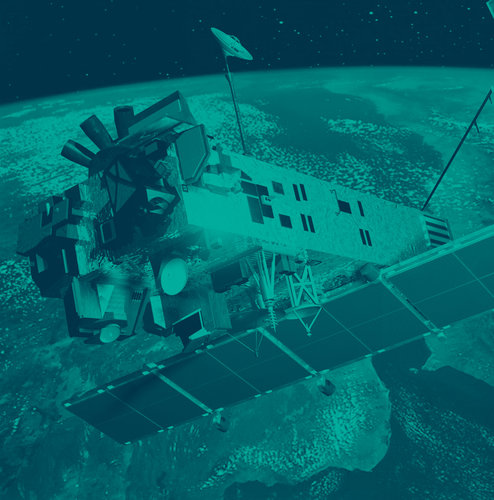Overview
The biosphere is the single feature that - so far as we currently know - makes Earth quite unique in the universe. It is the portion of our planet's land, atmosphere and oceans within which life exists or could potentially support life.
A dynamic global system
Life has existed on Earth for at least three billion years. It is life processes that have shaped the atmosphere to its present composition and modified the geology of the Earth's upper crust.
We cannot understand our planet's history or hope to accurately forecast its future state without taking account of the role of the biosphere. That is not a simple task because all the vast, widespread mass of phytoplankton, microbes, plants and animals on Earth are interlinked, forming a dynamic global system.
Primary production
Virtually all life on Earth is ultimately dependent on a process called photosynthesis, where different organisms ranging from bacteria to plants use light and carbon from the atmosphere to create energy-rich compounds, giving out oxygen as a by-product. This process – known as 'primary production' - sustains the rest of the marine and surface food chains and ensures that animal life has oxygen to breathe.
The thin film of microscopic phytoplankton found on Earth's oceans plays a disproportionately important role in carrying it out: forming less than 1% of global biomass, phytoplankton perform half of all photosynthesis – the reminder being carried out by terrestrial plants.
The biosphere and the carbon cycle
And because photosynthesis also takes carbon out of the air, the biosphere is at the centre of carbon's movement between the atmosphere, ocean and land, a phenomenon known as the carbon cycle.
Scientific interest in this topic is high because human activities are adding millions of extra tonnes of carbon to the air every year, a development with the side effect of causing the atmosphere to retain more heat and causing global warming.
So far the action of the biosphere within the carbon cycle absorbs about half of all the extra carbon.
What remains unknown is whether the biosphere will continue to moderate the worst effects of climate change in this way or if the carbon cycle itself will be disrupted as global warming accelerates, altering land and sea habitats faster than life can adapt.
To reduce uncertainty, researchers seeking to model the most likely future path of climate change need to include the biosphere within their calculations, and that means it needs to be parameterised to a high level of detail on a global basis.
Measuring photosynthesis from space
Earth observation multi-spectral instruments such as Envisat's Medium Resolution Imaging Spectrometer (MERIS) help measure the planet's primary production as it occurs, detecting chlorophyll concentration over both land and ocean. MERIS was optimised for detecting ocean colour – local chlorophyll-producing phytoplankton levels can vary by a factor of a thousand – but can also chart the cover of different vegetation types and their leaf area, overall density and health.
Supplementing MERIS observations, radar instruments can see through clouds and darkness to provide continuous coverage of the land surface, in particular being used to map forest coverage.
The United Nations Environment Programme has recently used Earth observation results coupled with climate data to show that the energy created by plants using photosynthesis minus energy used for respiration increased globally by 6% during the last two decades.
However the picture was not so good in the oceans, where excess nitrogen run-off from agriculture, industry and sewage has caused runaway phytoplankton growth, eventually leading to around 150 deoxygenated 'dead zones' where no life can survive, some extending across up to 70 000 sq km.















 Germany
Germany
 Austria
Austria
 Belgium
Belgium
 Denmark
Denmark
 Spain
Spain
 Estonia
Estonia
 Finland
Finland
 France
France
 Greece
Greece
 Hungary
Hungary
 Ireland
Ireland
 Italy
Italy
 Luxembourg
Luxembourg
 Norway
Norway
 The Netherlands
The Netherlands
 Poland
Poland
 Portugal
Portugal
 Czechia
Czechia
 Romania
Romania
 United Kingdom
United Kingdom
 Slovenia
Slovenia
 Sweden
Sweden
 Switzerland
Switzerland




























